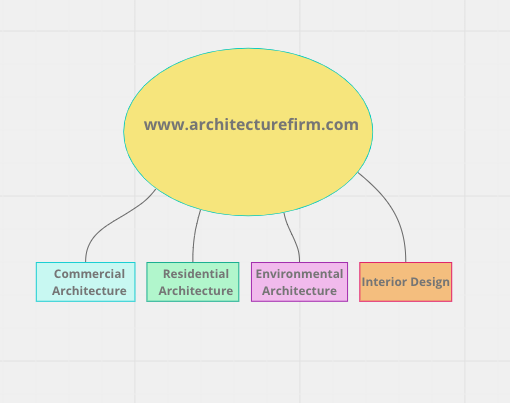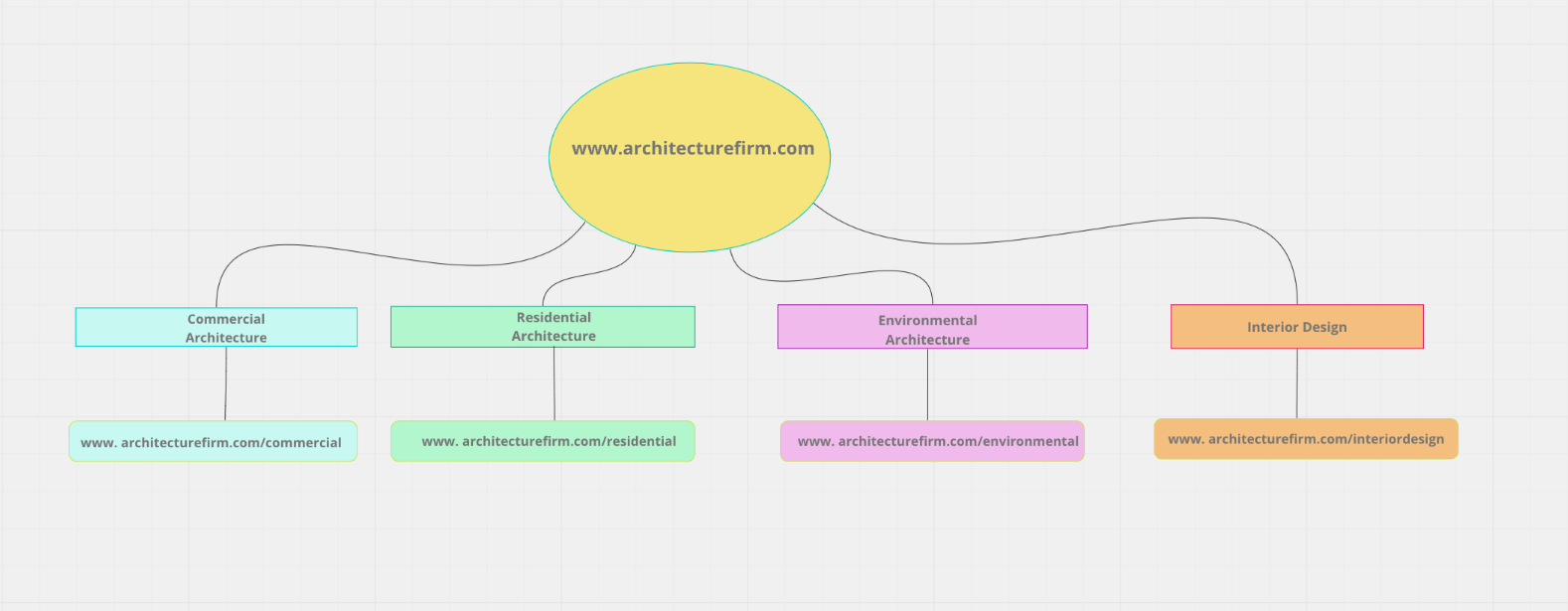//
Dec 14, 2023
Creating B2B SEO Silos That Educate and Nurture Users
In today's ever-evolving digital marketing terrain, where algorithms wield immense power, honing the craft of B2B SEO has never been more essential.
While business leaders undoubtedly are aware of the impact a can have on your bottom line, in the journey of digital dominance, one term stands out - SEO silos.
Let's delve into the world of SEO silos and explore how they can not only elevate your search engine rankings but also educate and nurture your B2B audience.
Understanding SEO Silos
Before we dive into the intricacies, let's demystify the concept of SEO silos.
Picture your website as a library. Each book in this library is a webpage, and the shelves represent different categories or topics. SEO silos, then, are the meticulous organization of these shelves, ensuring that related content is grouped together. In , this SEO silo structure isn't just about pleasing search engines; it's about creating a seamless user experience.
The significance of silos in B2B SEO strategies lies in their ability to guide both search engines and users through the intricacies of your content. Think of it as a roadmap that not only boosts your visibility on search engine result pages but also intuitively leads your audience to the information they seek.
The Benefits of Creating SEO Silos

SEO silos are a website structure strategy used in search engine optimization (SEO) that organizes content into different groups or themes, with the goal of improving the relevance and authority of a website for specific topics or keywords. Let’s take a look at some other benefits of siloing.
Improved user experience (UX):
By using SEO silos, you can create dedicated sections or pages on your site that are optimized for specific keywords or phrases related to that information or problem. This makes it more likely that visitors will find what they are looking for immediately, without having to wade through pages of irrelevant content.
By providing a more focused and streamlined user experience, visitors are more likely to stay on your site and browse other related content within the same silo.
Heightened brand trust and authority:
SEO silos require that you create high-quality, in-depth content that is relevant to a specific theme or topic. This can increase the value of your content for visitors and position your website as an authoritative resource.
By organizing content into silos, you can demonstrate your expertise and authority in a particular field or industry. This can increase the trust and credibility of your website and brand.
Enhanced conversion rates:

Silos make it easier for people to find the information they need immediately without having to scroll through all those extra pages on your site. By organizing content into different groups or themes, SEO silos enable visitors to navigate your website more intuitively, without having to scroll through irrelevant or extraneous pages.
SEO silos allow you to target specific keywords or phrases for each silo, which can improve the relevancy of your website in search engine results pages (SERPs). By attracting more targeted traffic to your website, you increase the chances of conversion.
Increased search engine rankings:
By creating a clear and logical structure for your content, you help search engines understand the relationships between your pages and improve the relevance and authority of your website for specific topics. This can result in higher rankings and increased traffic from search engines.
Key Elements of Effective SEO Silos

Creating SEO silos that resonate with requires a thoughtful orchestration of key elements. Let's break down the essentials:
Relevant Keyword Research for B2B SEO
In B2B SEO, keywords are the compass guiding your audience to your virtual doorstep. A comprehensive keyword research strategy is not merely about high search volumes; it's about understanding the language of your audience. Dive deep into industry-specific terms, product names, and pain points to curate a keyword repertoire that speaks directly to your B2B clientele.
Content Structuring and Organization Within Silos
Imagine opening a meticulously organized filing cabinet – each file neatly labeled and easily accessible. Your website should offer a similar experience. within silos so that users can seamlessly navigate through related topics. This not only enhances user experience but also signals to search engines that your content is well-organized and relevant.
Internal Linking Strategies to Strengthen Silos
Internally linking related content within your silos is akin to weaving a web of knowledge for your users. When done strategically, internal links not only guide users to additional valuable information but also help search engines understand the hierarchy and relevance of your content. It's about creating a digital ecosystem where each piece of content plays a role in the larger narrative.
Creating Educational SEO Silos

Beyond the technical intricacies, the true magic of B2B SEO silos lies in their ability to educate your audience. Here's how you can transform your silos into :
Aligning Silos with Audience Knowledge Levels
Consider your B2B audience as diverse learners with varying levels of expertise. Tailor your silos to accommodate both beginners seeking introductory insights and seasoned professionals craving in-depth analysis. By aligning your content with the knowledge levels of your audience, you create a valuable resource hub that caters to all.
Incorporating Informative Content That Educates Users
Educational content doesn't mean inundating your audience with jargon-laden articles. Instead, it's about providing actionable insights, industry trends, and practical solutions. Craft content that not only educates but also empowers your B2B audience to make informed decisions. Remember, an educated audience is an engaged audience.
Utilizing Multimedia to Enhance Educational Value
The digital landscape is dynamic, and so are the preferences of your audience. Enhance the educational value of your SEO silos by incorporating multimedia elements. Infographics, , and webinars not only break the monotony of text but also cater to different learning styles. A diverse content approach keeps your audience engaged and coming back for more.
Nurture Users and Understand Their Journey with SEO Silos

Understanding the B2B buyer's journey is pivotal in creating SEO silos that nurture your audience. Let's map out how your silos can guide potential clients from exploration to conversion:
Addressing Pain Points and Challenges
Your B2B audience is on a mission – a mission to solve problems and overcome challenges. Craft content within your silos that directly addresses these pain points. Whether it's through , solution-oriented guides, or expert insights, position your brand as the go-to resource for overcoming the hurdles in your industry.
Implementing Lead Nurturing Techniques Within Silos
Every click, scroll, and interaction within your SEO silos is a touchpoint with your potential clients. Implement lead nurturing techniques by offering downloadable resources, encouraging newsletter subscriptions, or providing access to exclusive webinars. This not only keeps your audience engaged but also moves them along the buyer's journey.
Sustaining B2B SEO Silo Success
As we navigate the ever-evolving landscape of digital marketing, it's crucial to adhere to best practices for sustaining success. Here are some guiding principles:
Regular Content Updates and Maintenance
The digital world doesn't stand still, and neither should your content. Regularly update your SEO silos with fresh insights, industry news, and . This not only keeps your audience engaged but also signals to search engines that your content is relevant and up-to-date.
Monitoring and Analyzing Performance Metrics
Numbers tell a story – a story of what resonates with your audience and what needs improvement. to understand user behavior, conversion rates, and the performance of individual silos. Use these insights to refine your strategy and amplify what works.
Adapting Strategies Based on Evolving Industry Trends
The only constant in digital marketing is change. Stay ahead of the curve by keeping a keen eye on emerging trends in your industry. Adapt your SEO silos to reflect the shifting landscape, ensuring that your content remains not only relevant but also anticipates the needs of your B2B audience.
Creating a Successful SEO Silo Structure
Creating a successful SEO silo structure requires the silo structure to be easy to navigate and understand, both for visitors and search engines. This means using clear, descriptive headings and subheadings, and ensuring that each silo and page is linked logically and coherently to other related pages. Let’s break down this into steps.
Step 1: Decide on the main topic categories for each silo
The first step is to identify the main topics or themes that are relevant to your website or business. These might include product categories, services, industry topics, or other areas of interest to your audience.
Once you have identified your topics, group them into silos or categories. Each silo should contain related topics that are closely connected in terms of theme, purpose, or content.
Step 2: Group topics into a clear hierarchy
Group your topics into silos and develop a hierarchy for each silo. This involves organizing the content within each silo in a logical and coherent way so that visitors can easily navigate between highly related topics. Create clear and descriptive labels for each silo and topic, so visitors can quickly understand the content and purpose of each section of your website.
For example, suppose you are an architecture firm wanting to target other architecture, electrical, and construction businesses () with relevant content. In this case, your silo list might look something like this:

How do you make your site more search engine friendly while also siloing content for SEO?
Step 3: Clarify experiences with consistent layouts and clean navigation
Using a consistent layout and design for in silos allows visitors to quickly and easily recognize the different sections of your website. This involves using a consistent color scheme, , or layout for each silo.
Include clear and prominent navigation links within each silo so visitors can easily navigate between related topics. Using drop-down menus, sidebars, or other navigation tools help visitors find the content they are looking for quickly and easily.
Testing and refining your navigation structure starts with analytics and user feedback to identify any areas of confusion or difficulty for visitors. This will enable you to iterate and optimize your navigation and improve the overall user experience on your website.
Using the architecture firm example above, siloed URLs may look like this:

Step 4: Use internal links to drive traffic and engagement to your silos
It is important to build a strong internal linking structure to improve the .
You should use various keywords and phrases relevant to your brand, products, and services when creating a website. This will help increase the visibility of your page on search engines like Google. It will also help you improve your site's ranking in ).
To build a solid internal linking structure for your site, you should ensure that each page links back to other parts. Internal links help you connect all your pages, making it easier for users to navigate them when they visit your site. The less clicks the user path has, the more performant the silo is likely to become. Both users and search engines like it when there isn’t a huge number of engagements that need to happen to access valuable information and content.
Step 5: Silos require consistent updates to remain effective

Don’t rely on a one-time effort to populate your website with content. Continually add new material to each silo so that people keep coming back for more.
The process of building effective silos for SEO continues after you reorganize the existing pages on your site. These groups are starting points.
Your goal should be to provide comprehensive coverage of your silo topics. Examine the pages in each group and look for any information gaps, then use these as ideas for new pages.
You can do keyword research to identify additional opportunities for each of your silos. This should be an ongoing process and a significant part of your content marketing strategy.
As you continue adding new content and links to each of your silos, you show search engines that you’re an authority on your chosen topics.
Need to refresh your website, or just start from scratch? Check out these resources curated by our team of experts before you start.
- READ:
Empower, Engage, and Convert with SEO Silos
In B2B SEO, crafting SEO silos isn't just a technical maneuver – it's a strategic dance that empowers, engages, and propels your brand to new heights.
As you embark on this journey, remember that the true power of SEO silos lies not only in elevating your digital presence but in becoming a beacon of knowledge for your B2B audience. So, let your silos be the lighthouse guiding your audience through the vast sea of information, illuminating the path to success.
At, we ensure you have a team of experts who can help you navigate complicated marketing ecosystems. We have the expertise to integrate SEO, content, web design, and development seamlessly, enabling you to achieve higher page rankings and increased conversions for your business.
We are a full-service.
Save time, money, and stress! Let Watermark help you with a custom .
Weak search visibility complicating your brand’s opportunities?
Weak search visibility complicating your brand’s opportunities? Gain clarity, measure success, and differentiate your brand with data-informed SEO services that drive real results. Ready to grow? Contact us today.







